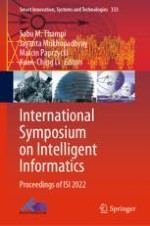
2023 | OriginalPaper | Buchkapitel
DCLL—A Deep Network for Possible Real-Time Decoding of Imagined Words
verfasst von : Jerrin Thomas Panachakel, A. G. Ramakrishnan
Erschienen in: International Symposium on Intelligent Informatics
Verlag: Springer Nature Singapore
Aktivieren Sie unsere intelligente Suche, um passende Fachinhalte oder Patente zu finden.
Wählen Sie Textabschnitte aus um mit Künstlicher Intelligenz passenden Patente zu finden. powered by
Markieren Sie Textabschnitte, um KI-gestützt weitere passende Inhalte zu finden. powered by